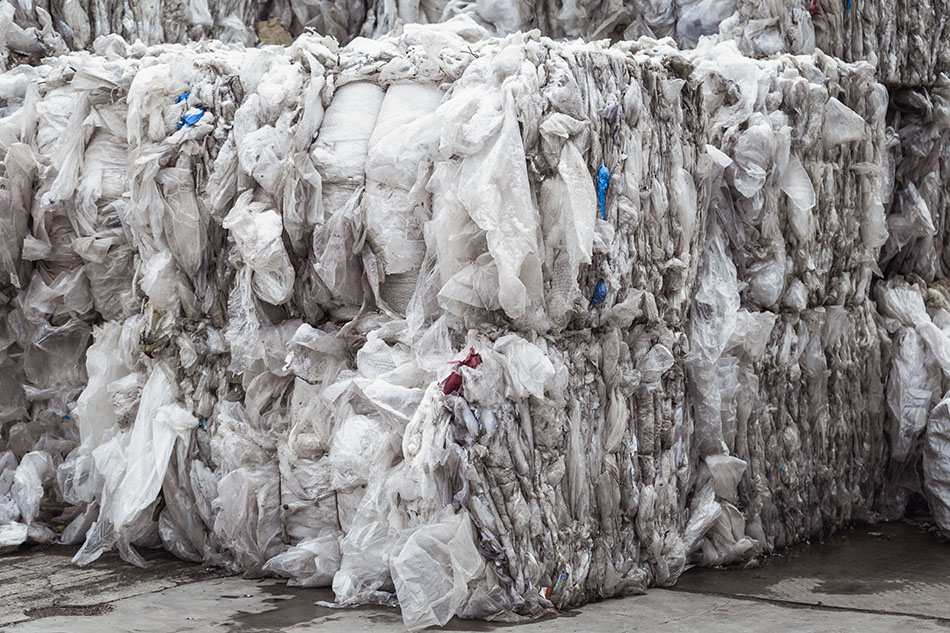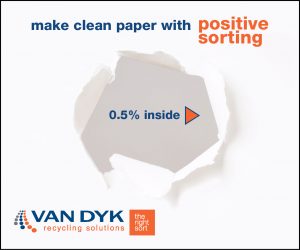
2017 brought the lowest volume of film recovered and sold since 2010. | taniascamera/Shutterstock
Non-bottle mixed plastics and film recycling have experienced their first major drops in a decade, two studies indicate. But amid the challenges, domestic use of both streams increased.
Overseas market disturbances led to significant drops in exports of both non-bottle rigids and film, according to the 2017 National Post-Consumer Non-Bottle Rigid Plastic Recycling Report and the 2017 National Post-Consumer Plastic Bag and Film Recycling Report. Released July 2 by the American Chemistry Council, the studies were conducted by consultancy More Recycling.
The reports measure recovery for recycling, which is defined as material that is collected and sold. The decline in international sales was countered by increases in domestic purchasing, but that growth wasn’t enough to offset the large-scale export collapse.
Nearly 1.35 billion pounds of U.S. recovered non-bottle rigid plastics were sold in 2017, down 108 million pounds, or 7%, from the prior year. It was the first year of significant decline in the 10 years the report has been published.
Meanwhile, just over 1 billion pounds of recovered film were sold in 2017, down 24% from the more than 1.32 billion pounds sold in 2016. In fact, 2017 brought the lowest volume of film recovered and sold since 2010.
Exporters bought 378 million pounds of film in 2017, down 46% from 704 million pounds in 2016; and they purchased 267 million pounds of non-bottle rigids, down 33% from 398 million pounds in 2016.
The export downturn was accompanied by a modest 2% growth in domestic purchases of both non-bottle rigid plastics and recovered film. U.S. and Canadian buyers purchased 629 million pounds of film in 2017, up from 618 million pounds in 2016; and they bought 1.08 billion pounds of non-bottle rigid plastics, up from 1.06 billion pounds in 2016.
“In addition to the continued trend of more material flowing to domestic reclaimers than export, more material was segregated by resin,” the report states. Essentially, the report found that more MRFs are sorting plastic to a greater degree, and they are finding more domestic buyers as a result.
Besides being a difficult year for plastics recycling, 2017 brought challenges in reporting on industry figures. More Recycling commented on the difficulties of quantifying exports during the market upheaval in 2017, versus previous report years. The reports are compiled from voluntary surveys with companies that handle non-bottle rigids and film.
“Except for the largest exporters, players in the export market come and go, and may change the type or mix of materials that they purchase,” the authors wrote. “Increased volatility in the export market began in 2017 with the National Sword policy in China restricting the import of scrap materials, which took effect in 2018 when the data for 2017 was gathered. This situation made it a particularly challenging year to track exporters.”
A version of this story appeared in Plastics Recycling Update on July 10.
More stories about markets
- FV Recycling acquires Mid America Paper Recycling
- Box demand slump signals strain in US economy
- Federal Signal paves new way with acquisition



